They were women who challenged the norms of conduct of their time. They managed to make their mark on male-dominated fields after a lot of fighting.
In this way, we gather 20 great women that stood out in their historic moment and proved their worth.
1. Cleopatra (69 yr. C.- 30 yr. C.) - Queen of Egypt

Cleopatra, born in Alexandria, was queen of Egypt from 51-30 BC. a., during the Roman conquest.
As was tradition in her family, she married her brother, however, gathered supporters at court and later went to war against him. In order to defeat him, she allied with the Romans both militarily and emotionally, as she was the lover of Julius Caesar and Mark Antony.
With intelligence and political sense, Cleopatra knew how to take advantage of Roman domination to guarantee Egypt a privileged place within the Empire.
Upon learning that Marcus Antony had been defeated and had committed suicide, Cleopatra did the same by letting herself be bitten by a snake.
2. Tomoe Gozen (1157-1247) - soldier

We thought that only men could be samurai, but nothing further from reality. Many women received military training in order to protect their villages while the men were at war, and more than one went to the battlefield.
Tomoe Gozen was one of those women who would become a "onna-bugeisha", feminine term for samurai. Thus, she would fight in the Genpei War (1180-1185) with her husband, Minamoto no Yoshinaka (1154-1184).
She was described as a loyal and competent warrior. She played a prominent role in the Battle of Awazu in 1184, when she killed the samurai Uchida Ieyoshi (? - 1184)
Tomoe Gozen became a popular figure in the Japanese culture and several movies and books were made telling her life.
3. Joan of Arc (1412-1431) - military leader
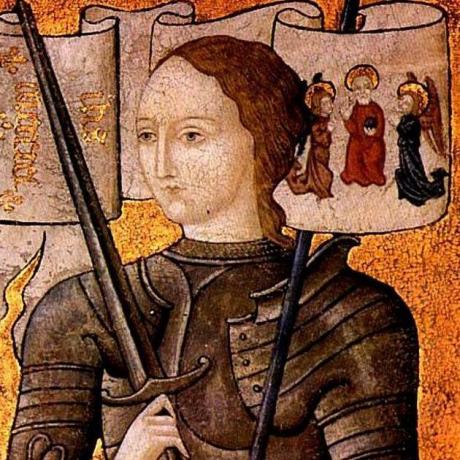
Joan of Arc was a French peasant woman who lived during the period of Hundred Years War.
This war was aimed at driving the British out of Normandy. With the death of French King Charles VI, the dispute turned into a civil war between the French, as there were those who supported the English and others who helped Charles VII.
At thirteen, she would have heard voices asking her to liberate France and crown Charles VII as king. Joan of Arc donned men's clothing, joined the dethroned sovereign's army, and led him to victory.
She was handed over to enemies and killed by the Inquisition. However, her bravery example is admired to this day.
4. Ser Juana Inês de la Cruz (1651-1695) - writer and poet

Juana Inés de Asbaje y Ramírez de Santillana was born as an illegitimate daughter – her parents were not married – from an early age Joana showed a great inclination for studies. She even proposed that her mother disguise her as a man and take her to university.
At thirteen, she went to Mexico City and there received the protection of the viceroy and his wife, who became her patrons. For them, she wrote poems, plays and eulogies.
Not wanting to get married, she preferred to join the Order of the Jerónimos, where she was able to continue her studies, receive visits and write.
Upon entering religious life, she changed her name to Juana Inês de la Cruz and with this name she became one of the great writers of the Golden Age.
5. Bartolina Sisa (1753-1785) - military leader and queen

Bartolina Sisa was born in the city of Cantón de Caracato, Bolivia, and dedicated herself to the trade in coca leaves and fabrics. She learned how to ride a horse, handle a rifle and was also interested in learning fighting tactics.
She married in 1772 Túpac Katari with whom she had four children. With her husband, she came to lead 80,000 Indians who rebelled against the Spaniards.
Proclaimed queen in 1781, she had the same rank as her husband and was a respected and accepted leader.
The Spaniards, however, made alliances with tribes that were opposed to the couple and defeated them. Bartolina Sisa was arrested and sentenced to death by dismemberment on September 5, 1785, in La Paz. Her head would be displayed in several cities and was later burned and the ashes scattered.
Her dying day was proclaimed International Indigenous Women's Day.
6. Empress Leopoldina (1797-1826) - Empress of Brazil
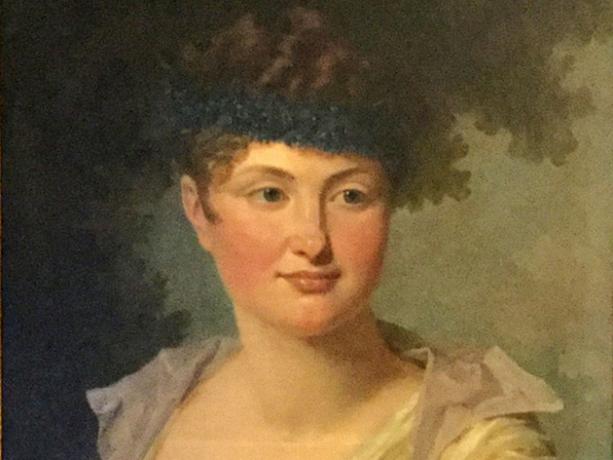
Empress Leopoldina was born as Archduchess of the Austro-Hungarian Empire and married the heir to the Portuguese throne, the future Sun Peter I.
It identified itself in such a way with its new homeland that it took sides with the Brazilians when the process of Independence of Brazil.
Absent, the Prince Regent became the first Head of State in Brazil and the one who signed the document that separated the new country from Portugal.
She had eight children and died at age 26 as a result of complications in childbirth.
7. Nísia Floresta (1810-1885) - writer, teacher and lecturer
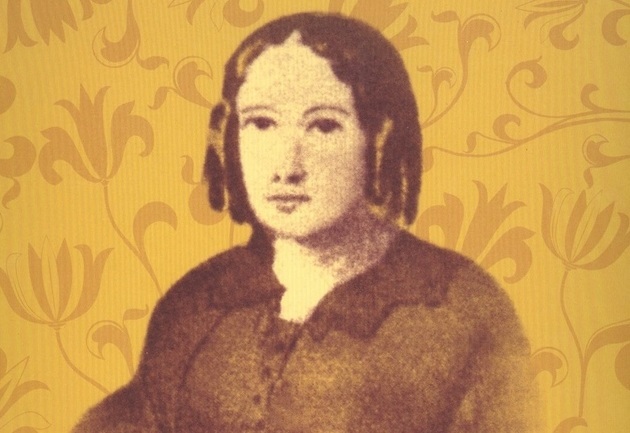
She was born in Rio Grande do Norte, in 1810, but settled in several cities such as Recife, Porto Alegre, Rio de Janeiro and Paris.
Nísia has published about fifteen books on feminist themes, politics, abolition and even a travel itinerary in Germany.
A pioneer, she founded the first schools dedicated to teaching girls in Rio Grande do Sul and Rio de Janeiro. She collaborated with the Rio press and gave conferences. Later, she would move to Paris and there she would be friends with the philosopher Auguste Comte.
She died in France and her remains were transferred to Papari / RN which is now called Nísia Floresta and houses a museum to preserve the memory of the educator.
8. Clara Schumann (1819-1896) - pianist and composer

Clara Schumann was one of the greatest nineteenth-century pianists comparable to Liszt. Born in Leipzig, Germany, she was the wife of pianist and composer Robert Schumann and friend of composer Johann Brahms.
Clara composed works for piano, songs and chamber music, inspired by the movement of the Romanticism. In addition, she edited and published in recitals several of her husband's scores after his death.
Mother of eight children, renowned teacher and concert artist, Clara Schumann did not leave an extensive work, but her pieces are of excellent quality.
9. Marie Curie (1867-1934) - scientist and university professor

Born in Poland, Marie Curie went to Paris where she developed an important career as a scientist. Married to Pierre Curie, the two shared their experiences and knowledge.
She was the first woman to teach at the University of Paris, to win the Nobel Prize, and the first person to do so on two occasions: in Physics (1903) and Chemistry (1911).
Her achievements include discoveries in the field of radioactivity and the elements polonium and radium. She also founded the Curie Institute in Paris and Warsaw.
A tireless researcher, Marie Curie ended up dying of leukemia contracted through the radioactive elements she helped to discover.
10. Mary McLeod Bethune (1875-1955) - educator and activist

Born to slave parents, Mary McLeod Bethune grew up in the segregationist environment of South Carolina (USA). Bethune only went to school at age 11 and when she came back from school she taught what she had learned to her parents.
He graduated from the Moody Bible Institute. In 1904, in Florida, she opened a school for black girls in order to prove that they were capable of receiving formal education. This would later become Bethune-Cookman University, aimed at African-American students.
In the 1930s, she actively participated in the presidential campaign of Franklin Roosevelt. When he was elected, he joined the Council for Blacks advising on presidential policy for people of color.
The First Lady, Eleonor Roosevelt, was her great ally in promoting black people. During World War II, she was a special adviser to the Armed Forces helping black women who wanted to join the Army.
After leaving government she continued her political activism through lectures and articles until her death in 1955.
11. Amelia Earhart (1897-1937) - Airplane Pilot
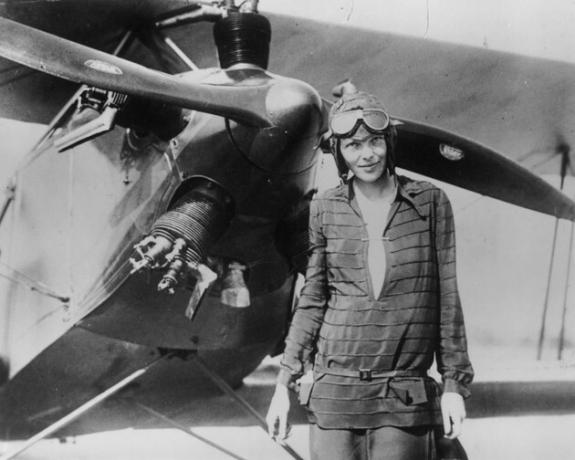
Amelia Earhart was born in Kansas, USA and was fascinated by aviation when she first flew. In 1920, she left University and worked various jobs to raise money for flying lessons.
She became the 16th woman in the world to have an aviation license and was the first to fly over 4000 meters in altitude. A year after Charles Lindbergh crossed the Atlantic, Amelia Earhart would be the first woman to do so in 1928.
She would even try to go around the world on two occasions. The second, in 1937, flying over the Pacific, she and her deputy found themselves lost and without enough fuel.
As their bodies were never found, both were officially declared dead in 1939.
12. Frida Kahlo (1907-1954) - painter and socialist activist
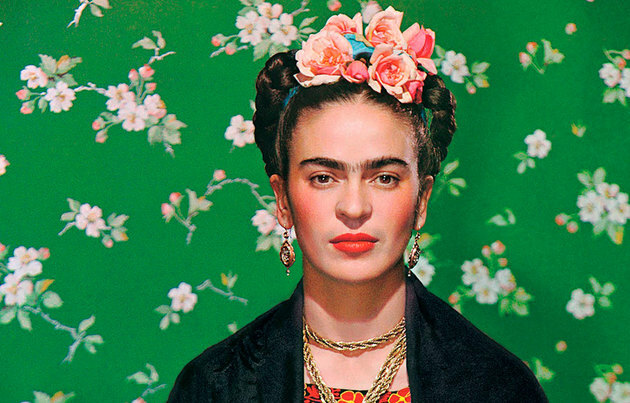
Frida Kahlo whose full name was Magdalena Carmen Frida Kahlo y Calderón had her life marked by tragedy and art.
She had a serious accident as a teenager that forced her to stay in bed for a long time and prevented her from being a mother. Likewise, the successive operations she had to undergo to correct her spine caused immense suffering.
A socialist activist, companion of the painter and muralist Diego Rivera, Frida Kahlo knew how to express her pain in her work with elements of Mexican popular culture.
Thus, we find the strong colors, the drawings almost naifs to portray universal themes such as loss, loneliness and abandonment.
To learn more about the universe surrounding this incredible artist, read:
- Frida Kahlo's most intriguing works
- Frida Kahlo
- Diego Rivera
13. Mother Teresa of Calcutta (1910-1997) - religious
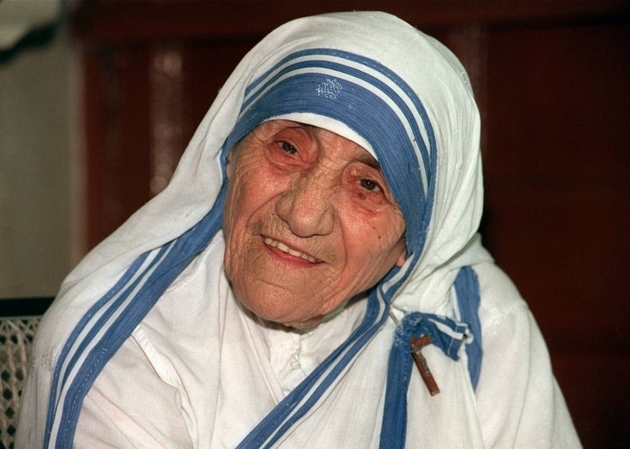
Born in Skopje, the current capital of Macedonia, when it was still a province of the Ottoman Empire. At 18 years old, mother Teresa she decides to become a nun and a missionary choosing to join the Order of Our Lady of Loreto, which carried out missions in India.
She arrived in India on January 6, 1929 and became a teacher, and later principal, of the school that the nuns maintained. However, in 1946 she says she received a call to "care for the poorest of the poor" by living among them.
This meant, in the caste system of India, take care of the rejected, lepers, physically and mentally handicapped. Added to this, the country had recently gained independence and the government had no way of helping those in need.
In 1950 she received authorization to found a congregation that was called Missionaries of Charity. The white habit with blue stripes, cut in the fashion of the Indian sari, would be the trademark of these nuns.
For her tireless work she was recognized with the 1979 Nobel Peace Prize. She was also friends with several personalities such as Princess Diana (1961-1997) and Pope John Paul II (1920-2005) who helped her with her work.
14. Hedy Lamarr (1914-2000) - actress and inventor
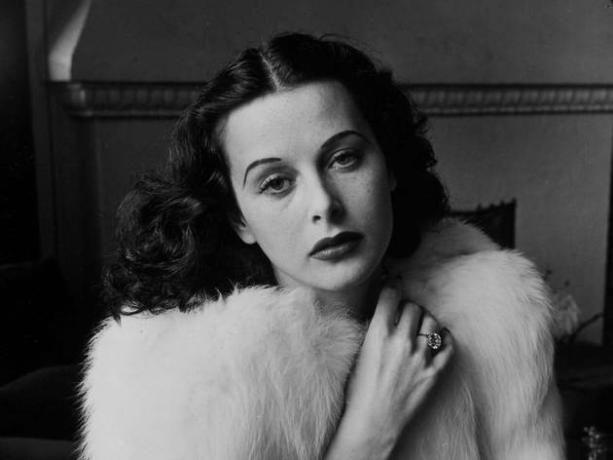
Hedwig Eva Maria Kiesler, known as Hedy Lamarr, was born in Austria into a wealthy family of intellectuals. She entered engineering school, but abandons it to be an actress.
She stars in several films and is the first woman to strip naked in a commercial film which caused a scandal at the time.
Married to a Nazi sympathizer, she goes to Paris on the run from her husband and later to the United States. There she would return to her acting career, starring in eighteen films in nine years and being considered one of the most beautiful women of her time.
When World War II began, he resumed scientific studies. Together with the American composer George Antheil (1900-1959), he develops a system that allows the extension of the radio frequency that guided missiles.
The military did not realize the importance of the invention until the Cuban Missile Crisis in 1962. Subsequently, the invention was used to develop the Bluetooth and the wifi that are present in our daily lives.
15. Margaret Thatcher (1925-2013) - British chemist and prime minister
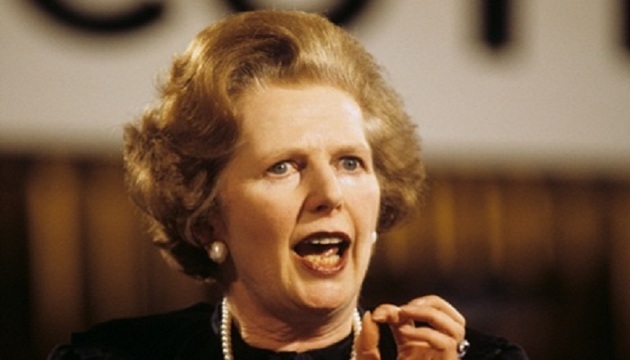
Margaret Thatcher was the first woman to reach the post of Prime Minister in the UK. Coming from a middle-class family, she studied Chemistry at the University and later, Law.
She became involved in politics militating for the Conservative party for which she would be deputy, minister and ultimately its leader. She won the election to be British prime minister in 1979 and would be re-elected until 1990.
Her government was marked by strikes, attacks in Ireland, the Falklands War and the timid openness that was being rehearsed in the Soviet Union.
Her response was usually aggressive and firm, making the nickname "Iron Lady" gain traction.
Margaret Thatcher's neoliberal legacy remains controversial to this day. However, she proved that women could pursue a political career without needing the help of a husband.
16. Nina Simone (1933-2003) - composer, singer, pianist and activist
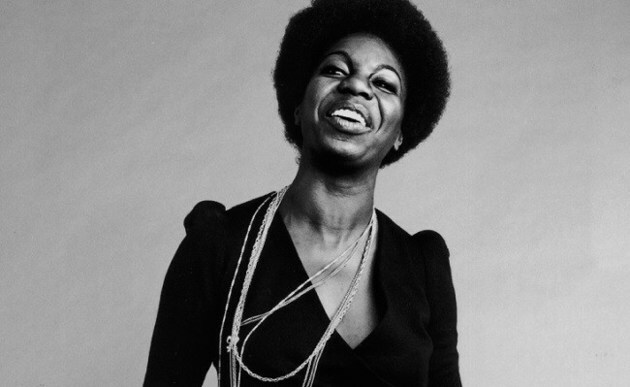
Born Eunice Kathleen Waymon in North Carolina, she dreamed of becoming a classical pianist and studied at the prestigious Julliard School in New York. However, she was turned down at the Curtis Institute in Philadelphia for being black.
She then decides to become a singer and pianist and adopts the name Nina Simone. She would write 500 songs, record 60 records and be nominated for a Grammy 15 times, but would not win any awards.
In addition to her important musical activity, she was an American Civil Rights activist. Her lyrics tell of the difficulties that Afro-descendants went through and became anthems of the black movement.
17. Valentina Vladimirovna Tereshkova (1937) - cosmonaut and politics

Valentina Vladimirovna Tereshkova was the first woman to travel into space on June 16, 1963. To this day, it remains the first and only one to do it alone. It remained in orbit for almost three days and its achievement was widely publicized within the environment of the Cold War.
Valentina was a textile factory worker and parachutist. She was selected by the Soviet space program, which planned to send someone else into space after Yuri Gagarin managed it in 1961.
In addition to the military objective, Valentina's trip to space promoted equality between genders and classes. In this way, the superiority of socialism over capitalism was shown.
after the end of the ussr, Valentina became a deputy in the Russian assembly (Duma) and continues to be active giving lectures about her space travel.
18. Françoise Barré-Sinoussi (1947) - scientist
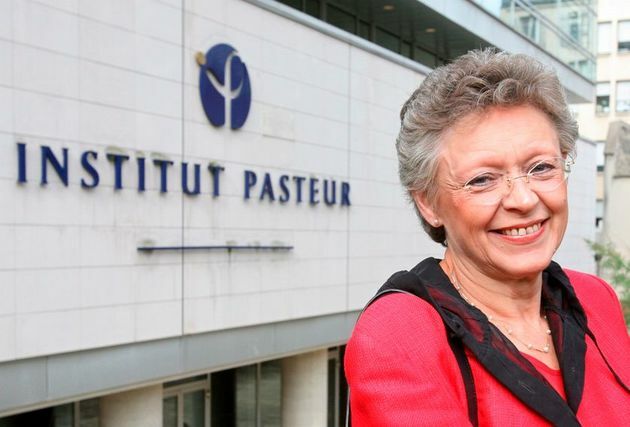
Born in 1947, her studies enabled her to identify the HIV virus in 1984. This discovery led to her being awarded the Nobel Prize for Medicine along with her former advisor at the Pasteur Institute, Luc Montagnier.
Since she was a child, she was interested in observing and dissecting insects, but she hesitated between studying Medicine or pursuing a career as a researcher. So when she got an internship at the Pasteur Institute, her doubts were dispelled and she became a virologist.
Françoise Barré-Sinoussi remains active giving lectures on the AIDS and the importance of prevention in relation to this disease.
19. Marta Vieira (1986) - soccer player

Marta Vieira was born in Dois Riachos (AL) and since she was a child she played soccer with school and street children.
Her speed and powerful left-handed kick have earned her the recognition of FIFA's Best Player for five straight years, a fact that no man or woman surpassed until 2018.
The athlete started at the CSA of Alagoas, but moved to the United States where she played for Los Angeles Sol. However, it was in Sweden with the Umea IK team that she stood out, attracting the attention of the international press.
For the Brazilian team, she won the gold medal at the 2003 and 2007 Pan American Games. At the 2004 and 2008 Olympic Games, she won the silver medal. In the 2007 Soccer World Cup, Brazil was in 2nd place, but she was the top scorer and chosen the best player in the competition.
In 2018, Marta is on the Orlando Pride team, in the United States.
20. Malala Yousafzai (1997) - writer and political activist
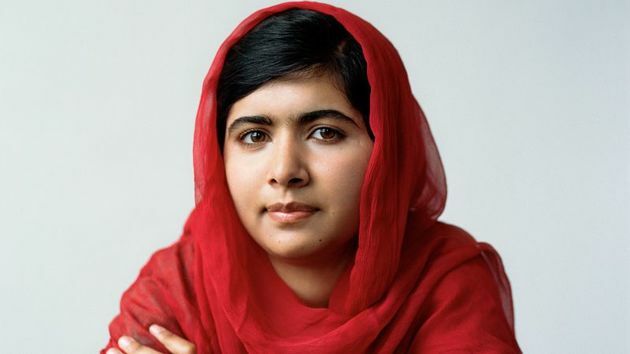
Malala Yousafzai was born in Pakistan. Her father was a teacher, and with the arrival of the Taliban in the region in 2007, the girls were banned from going to school.
Malala, who was a brilliant student, organizes demonstrations with her classmates. Later, she would give interviews and write a blog for the BBC chronicling the situation in the village.
As a result, she and her father began to receive death threats. She, however, continued to go to school and protest the ban.
So, on October 9, 2012, the Taliban intercepted the bus taking her to school and shot her in the face to kill her. The attack generated a worldwide commotion and Malala's life became known around the world.
When she recovered, Malala delivered a scathing speech to the UN in defense of early childhood education, won several international awards, released books and created the Malala Fund to finance education female.
She was awarded the Nobel Peace Prize in 2014 as the youngest person to receive it. In 2018, Malala lives in the UK, but has not neglected her studies and is enrolled at Oxford University where she studies Philosophy, Politics and Economics.
Quiz of personalities who made history
You may also be interested in:
- What is Feminism: origin, history and characteristics
- Femicide: definition, law, types and statistics
- Maria da Penha Law: history, characteristics and summary
- Female Vote in Brazil - origin, laws and the Constitution of 34
- International Women's Day
- Brazilian Black Personalities
- Women who made the history of Brazil


